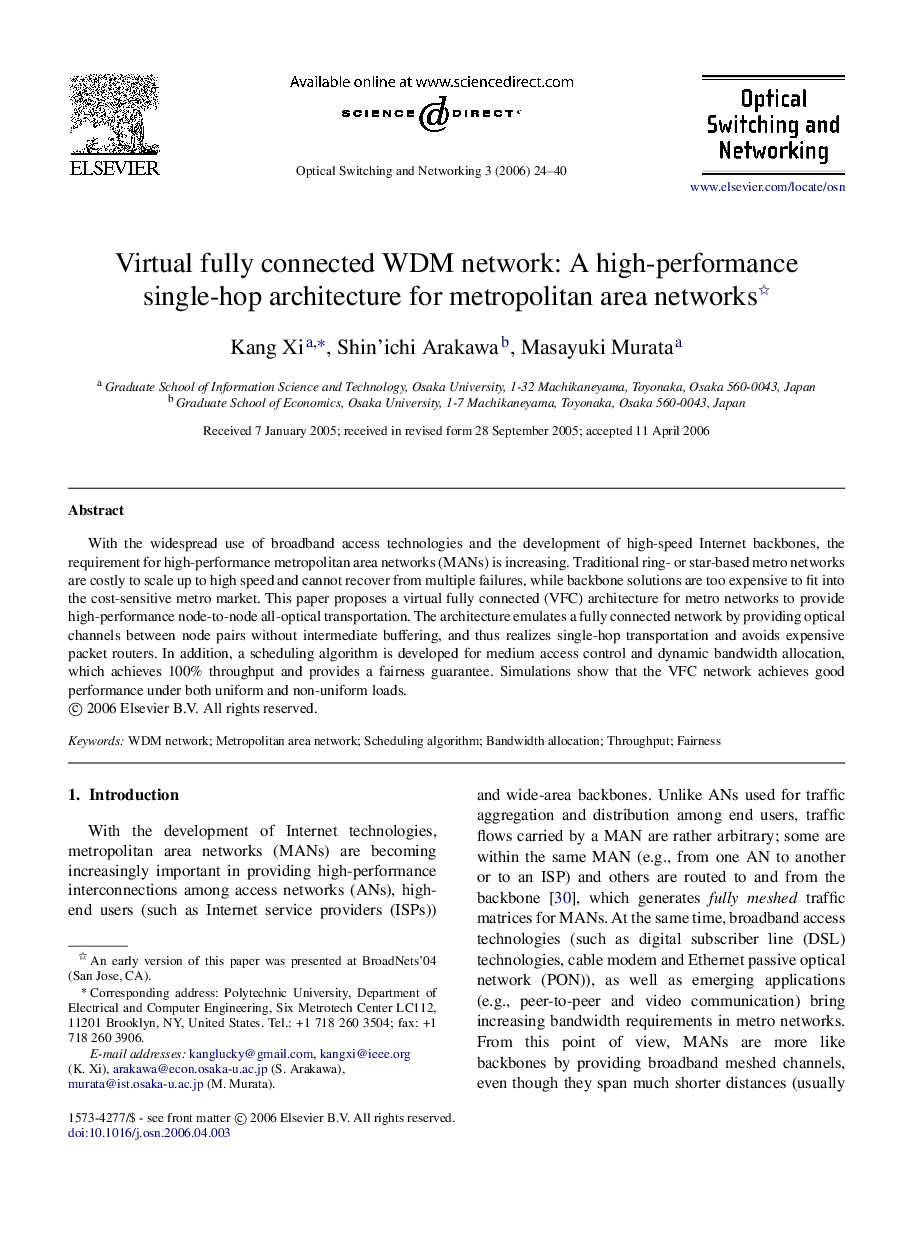| Article ID | Journal | Published Year | Pages | File Type |
|---|---|---|---|---|
| 462853 | Optical Switching and Networking | 2006 | 17 Pages |
With the widespread use of broadband access technologies and the development of high-speed Internet backbones, the requirement for high-performance metropolitan area networks (MANs) is increasing. Traditional ring- or star-based metro networks are costly to scale up to high speed and cannot recover from multiple failures, while backbone solutions are too expensive to fit into the cost-sensitive metro market. This paper proposes a virtual fully connected (VFC) architecture for metro networks to provide high-performance node-to-node all-optical transportation. The architecture emulates a fully connected network by providing optical channels between node pairs without intermediate buffering, and thus realizes single-hop transportation and avoids expensive packet routers. In addition, a scheduling algorithm is developed for medium access control and dynamic bandwidth allocation, which achieves 100% throughput and provides a fairness guarantee. Simulations show that the VFC network achieves good performance under both uniform and non-uniform loads.
